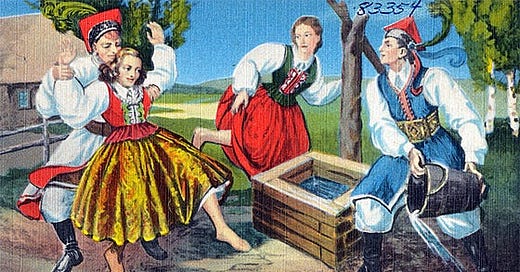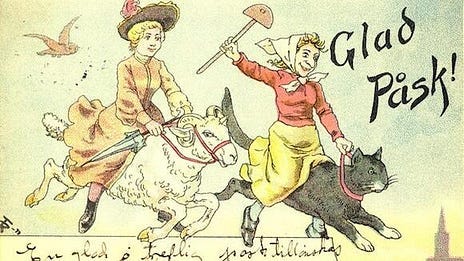Unique And Intriguing Easter Traditions That May Surprise You
From witchcraft to crime fiction, Easter traditions differ from place to place
Most of the holiday traditions celebrated in places like the U.S., Canada, and Australia originated in Europe, with many having their roots in ancient pagan festivals. The early Christian missionaries found that conversion was an easier sell if they didn’t try to change everything all at once.
By overlaying their message on existing traditions and belief systems, they were able to successfully convince people that the new way of doing things wasn’t all that different from what was familiar. A goddess becomes a saint, a solstice celebration becomes a holy day, and a fertility symbol gets reproduced in chocolate and distributed in mass quantities by a large herbivore with floppy ears. Everybody’s happy. (Traditions involving candy seem to inspire acceptance quite easily.)
Immigrants to “The New World” brought many of their traditions with them, but some didn’t travel well. Here are a few Easter traditions with which you may not be familiar.
Śmigus-dyngus: Watering Monday
In Eastern European countries like Poland and Hungary, young women in some communities can expect to get doused with water on Easter Monday or Dyngus Day. This tradition is believed to be rooted in pagan purification and fertility rituals. In some places, the ritual soaking is accompanied by whipping with pussy willow branches. (I can see why this might not go over well with everyone.)
Paskkarringar: Easter Witches
If you happen to be in Sweden on the Thursday before Easter, you may think it’s Halloween. Tradition has it that witches fly to the mythical island of Blåkulla on Maundy Thursday to consort with the Devil. It’s said that they scoop up children they see along the way and take them with them.
Children dress up as witches wearing head scarves and long skirts, or as old people to disguise themselves. Then, carrying broomsticks, they go door-to-door begging for sweets, similar to trick-or-treating in America. Sometimes they exchange handmade cards or pictures for candy.
Påskekrim: Easter Crime

Norwegians like to celebrate Easter by reading crime novels. However, unlike most holiday traditions, this one is relatively recent in origin.
It all began as a publicity stunt in 1923. A crime novel publisher took out a front-page ad in a popular newspaper declaring that an Oslo to Bergen railway train had been looted during the night. So many people believed the ad was a legitimate news story that it caused an uproar. As a result, the book the publisher promoted with the ad became a bestseller.
From then on, the release of crime novels at Easter became a regular occurrence. In addition, the tradition has grown to include watching crime shows and movies on television during the Easter season.
San Pedro Cutud Lenten Rites: Voluntary Crucifixion
In the Philippines, some Christians take Easter so seriously that they are willing to undergo torture to prove their faith. Each year on Good Friday in Barangay San Pedro Cutud, San Fernando, Pampanga, a passion play is presented where three penitents are nailed to wooden crosses in imitation of Jesus and the two thieves with whom he was crucified.
Volunteers are sometimes prompted by gratitude to God for a favor granted or to petition for the forgiveness of their sins. Most participants are men, although some women have undergone the experience. The crucifixions typically last about five minutes. One man, Rueben Enaje, has famously undergone this ritual over 30 times.
Alfombras: Easter Carpets
A beautiful and artistic Easter tradition occurs in Guatemala on Good Friday when processions through the streets progress over colorful and intricate carpets called alfombras. These are made primarily of colored sawdust, which must be repeatedly sprayed down with water to keep them from blowing away. Other materials used include pine needles, flower petals, and sometimes unusual items like bottle caps and tea bags.
It isn’t always practical to travel during a holiday season, but witnessing some of these Easter traditions may make it worth the effort. Be sure to make your plans well in advance. Learning about how people do things differently in other places is one of the benefits of travel. Besides, how many people can say they witnessed a crucifiction, let alone a voluntary one? (Personally, I’ll pass on that one, but you do you. Okay?)
Happy Easter!
Support this Substack by ordering one of my original Haiku for You postcards. Thank you!
(Available only to US residents at present.)





